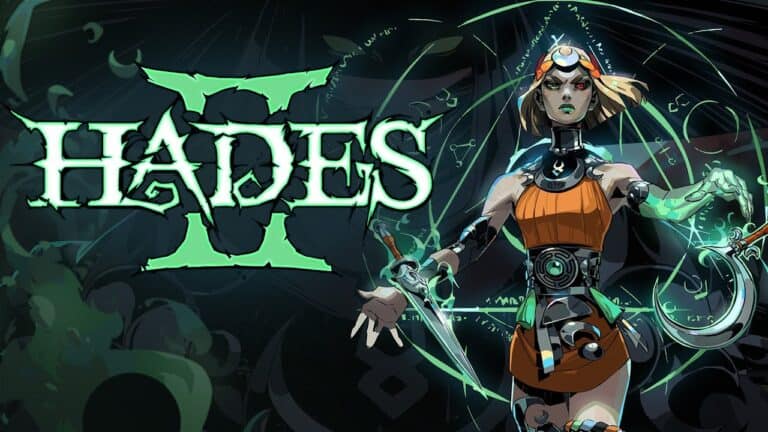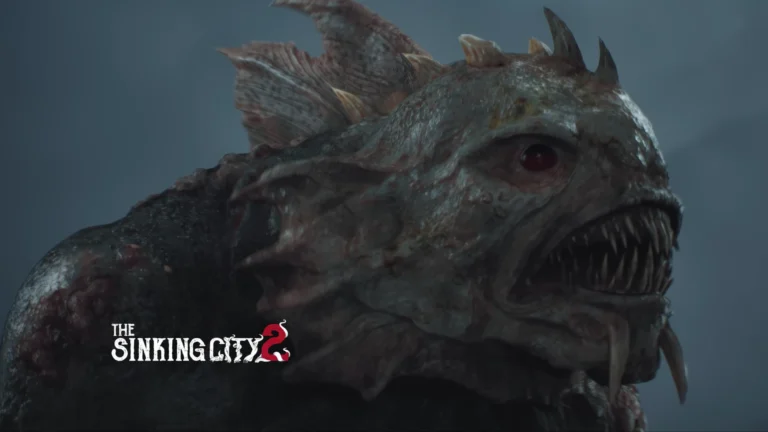
Creating assets for AAA games might seem daunting, but with the right tools and techniques, you can develop professional-quality game elements. The process typically involves using software like Blender, ZBrush, and Substance Painter to craft detailed models that perform well in game engines. To create a AAA-quality game asset, you need to master a combination of artistic skills and technical optimization while drawing inspiration from real-world references and maintaining industry standards.
The journey begins with understanding what makes an asset “AAA” – the high level of detail, optimization, and visual appeal that stands up to close scrutiny. Professional game artists use a workflow that moves from concept to blockout, then to high-poly modeling, texturing, and finally implementing the asset in a game engine like Unreal. Many artists find success using Blender, ZBrush, and real-time rendering tools to achieve the polished look that AAA games demand.
Learning to create these assets requires studying real-world locations, architecture, and nature to inform your designs. Your goal should be creating assets that not only look impressive but also perform well within game environments, striking the perfect balance between visual fidelity and technical efficiency.
Step 1: Understand the Production Pipeline
Creating an asset for a AAA game isn’t just about building something cool — it’s about making something optimized, visually cohesive, and technically functional within a massive, collaborative development pipeline. AAA studios follow strict workflows that often include:
- Concept and art direction: Everything starts with a visual brief or concept sheet. This defines the asset’s look, narrative context, scale, and artistic tone.
- Blockout or proxy modeling: A rough shape is built first to test scale and function in-game. This is especially critical for modular architecture or gameplay-interactive items.
- High-poly sculpting: Artists create a detailed version of the model, often using tools like ZBrush or Blender. This version isn’t for in-game use but is the basis for baking details into a lower-resolution mesh.
- Low-poly modeling: Optimized for performance, this version is created in Maya, Blender, or 3ds Max. It’s the mesh that will actually be loaded in-game.
- UV unwrapping and baking: The high-poly detail is baked into texture maps like normal, AO, and curvature maps. These are then applied to the low-poly version.
- Texturing: Using tools like Substance Painter or Quixel Mixer, artists create realistic materials with detailed surface maps (albedo, roughness, metallic, etc.).
- Rigging and animation (if needed): If your asset moves, like a character or mechanical door, it’ll need a skeleton and animations.
- Integration into engine: Finally, the asset is imported into the game engine (usually Unreal Engine or Unity), where shaders, collision, and interactivity are set up.
Step 2: Know the Technical Constraints
Working on a AAA asset means designing with performance in mind. Artists are always balancing fidelity with framerate. Here are key constraints:
- Polygon budget: Each asset must stay within a specific polycount range depending on its importance and distance to camera.
- Texture resolution: Most AAA studios use 2K or 4K textures, but the exact size depends on platform targets and LOD setups.
- Draw calls: Minimize material IDs and combine meshes smartly to reduce performance hits.
- Lightmap UVs and LODs: Proper lightmap UVs and multiple LOD versions (Level of Detail) help maintain visual quality while optimizing rendering.
Step 3: Align With the Art Style
Whether you’re making a photorealistic character for a war shooter or a stylized prop for an open-world RPG, the art direction must guide every decision:
- Match brush strokes, edge softness, and material treatment from the existing style guide.
- Study the game’s lighting environment — assets should look “correct” in that context.
- Use existing in-game assets as reference points for size, detail, and tone.
Step 4: Collaborate Across Departments
In a AAA environment, you’re rarely working in a vacuum. You’ll need to:
- Work with designers to ensure your asset fits gameplay needs (does the player climb it? Can it be destroyed?).
- Coordinate with technical artists for shader and material setup.
- Stay in sync with the environment or character art teams to maintain visual consistency.
Communication is just as important as modeling skills. Version control tools (like Perforce or Git LFS) and task trackers (JIRA, ShotGrid) are standard in most studios.
Step 5: Optimize for Final Delivery
Before your asset ships, it’ll go through QA and tech checks. To pass those, make sure:
- Naming conventions are correct and match studio standards.
- Pivots and scales are properly reset for engine integration.
- No stray vertices or non-manifold geometry remain.
- All maps are packed correctly and channels used efficiently.
- Test the asset in-engine to check how it performs under game lighting, animation, and gameplay use.
Final Thoughts
Creating assets for AAA games is equal parts art and engineering. It demands technical fluency, an eye for detail, and a deep understanding of how assets contribute to the player experience. Whether you’re aiming to get hired or already working in the industry, mastering these steps is how you ensure your work holds up at the highest level of game development.
Key Takeaways
- Use industry-standard software combinations like Blender, ZBrush, and Substance Painter to create detail-rich, optimized game assets.
- Study real-world references and draw inspiration from art, history, and culture to achieve authentic, believable game elements.
- Balance visual fidelity with technical optimization to ensure your assets perform well in game engines while maintaining AAA quality standards.
Understanding AAA Games
AAA games represent the pinnacle of video game development, requiring massive budgets and large teams to create polished, feature-rich experiences. They shape industry standards and often define gaming generations through their technical achievements.
Defining AAA Games
AAA (triple-A) games are high-budget, high-profile games developed by large studios and published by major companies. Think of titles like Call of Duty, Assassin’s Creed, or The Last of Us. These projects typically have development budgets ranging from $50-200 million.
Unlike indie games, AAA productions involve hundreds of developers working across multiple specialized departments. When you create assets for these games, you’re entering an ecosystem with strict quality standards and technical requirements.
The development cycles for AAA games often span 3-5 years, allowing for extensive polish and feature implementation. As a creator, you’ll need to understand that your assets must fit within established pipelines and meet specific technical benchmarks.
Characteristics of AAA Games
AAA games stand out through several distinctive features that you should consider when creating assets:
Visual Fidelity: These games push graphical boundaries with:
- Photorealistic textures (4K resolution minimum)
- Advanced lighting systems (ray-tracing, global illumination)
- High polygon counts for detailed models
Technical Requirements:
- Performance optimization for multiple platforms
- LOD (Level of Detail) variations of each asset
- Memory budget constraints despite high quality expectations
Your assets must balance visual quality with technical efficiency. This often means creating smart texture atlases and optimized mesh topologies.
AAA gameplay often centers around refined mechanics with responsive controls and polished user interfaces. Your assets need to support these gameplay elements while maintaining performance standards.
Foundations of Game Development
Creating assets for AAA games requires understanding the core principles that make games engaging and successful. These foundations help ensure your assets will integrate seamlessly with gameplay and enhance the player experience.
Game Design Principles
Good game design starts with a clear understanding of player experience goals. You should always consider how your assets will contribute to the game’s overall vision and theme. High-quality graphics paired with poor UI design can break immersion, so consistency across all elements is crucial.
When designing assets, think about:
- Player perspective – How will players interact with your asset?
- Visual hierarchy – Which elements should draw attention?
- Contextual relevance – Does your asset fit the game world?
Your assets should support the game’s core loop and enhance storytelling. Remember that AAA quality means attention to detail in textures, lighting, and scale. Players notice when elements feel out of place or unpolished.
Game Mechanics and Playability
Your assets must support the game’s physics, AI behaviors, and player interactions. Consider how they’ll function within the gameplay systems, not just how they look.
Key considerations for functional asset design:
- Collision detection – Ensure geometry works properly with the game’s physics
- Performance impact – Optimize assets to maintain frame rates
- Readability – Players should understand an asset’s purpose instantly
Test your assets in actual gameplay scenarios. A beautiful asset that creates confusion or disrupts gameplay will ultimately harm the player experience. The best AAA assets balance visual appeal with functional design.
Remember that game mechanics integrate with worldbuilding to create cohesive experiences. Your assets should reflect both the aesthetic and functional requirements of the game world.
Game Engines and Development Tools
Creating assets for AAA games requires powerful software to bring your ideas to life. The right tools can streamline your workflow and help you meet industry standards that top studios demand.
Overview of Game Engines
Game engines serve as the foundation for AAA game development, providing the framework needed to build complex virtual worlds. These platforms handle everything from physics simulation to rendering high-quality graphics. When creating assets, you need to understand how these engines process your work.
Modern game engines handle graphics, physics, AI, and asset management in one package. This integration saves you significant time compared to building systems from scratch.
Popular engines have specific asset requirements and pipelines. For example, Unity uses a meta-file system to track assets, while Unreal relies on its Content Browser for organization. Before creating assets, familiarize yourself with your target engine’s documentation to ensure compatibility.
Most engines support common file formats like FBX for models and PNG for textures, but optimization requirements vary significantly.
Unity and Unreal Engine Comparison
When choosing between Unity and Unreal for AAA asset creation, consider their distinct workflows and strengths. Unity offers a more accessible learning curve, while Unreal delivers more built-in visual quality.
Unity Advantages:
- More flexible for mobile and cross-platform projects
- C# programming is often considered more beginner-friendly
- Excellent for rapid prototyping and iteration
Unreal Engine Advantages:
- Blueprint visual scripting system reduces coding requirements
- Superior built-in lighting and material systems
- Nanite virtualized geometry for highly-detailed assets
Unity handles smaller assets efficiently, but many AAA studios prefer Unreal for its visual fidelity and powerful material editor. Your assets need different optimization approaches depending on your engine choice.
Using Maya for Asset Creation
Maya remains an industry standard for creating 3D assets in AAA game production. This powerful tool excels at modeling, texturing, rigging, and animation workflows that feed directly into game engines.
Maya’s polygon modeling tools give you precise control over asset geometry. Start with basic shapes and use edge loops to define your model’s silhouette before adding details. This approach ensures your assets maintain clean topology for animation.
The software’s UV editor helps you create efficient texture layouts that maximize resolution while minimizing file size. When working on character models, proper UV seam placement becomes crucial for texture quality.
Maya’s rigging tools like joint hierarchies and skin weighting are essential for character assets. For environment pieces, focus on Maya’s instancing features to create variations efficiently. The software’s FBX export options let you configure your assets specifically for Unity or Unreal.
Asset Creation Process
Creating AAA game assets follows a structured workflow that ensures high-quality results. The process combines technical skill with artistic vision to produce assets that meet the demanding standards of modern games.
Conceptualizing the Asset
Before touching any software, you need to develop a clear concept. Start by gathering reference images that show your asset from multiple angles. Create a mood board to guide your artistic direction and ensure consistency with the game’s aesthetic.
Consider the asset’s purpose within the game. Will players interact with it? Does it need different levels of detail (LOD) based on viewing distance? Think about how the asset fits into the broader game environment.
Sketch your ideas and create rough concept art. This doesn’t need to be detailed – just enough to communicate the shape, size, and notable features. Many professional studios use 2D concept art to guide 3D modelers.
Make sure your concept meets technical constraints like polygon budgets and texture size limitations before moving forward.
Modeling Techniques
Your modeling approach will vary based on the asset type, but most AAA-quality assets begin with a basic blockout. Use simple geometric shapes to establish proportions and overall form without getting lost in details.
For organic models (characters, creatures), start with a low-poly base mesh and then sculpt high-poly details in ZBrush or Blender. This workflow allows you to create complex surface details that will later be baked onto your game-ready model.
For hard-surface models (weapons, vehicles, architecture):
- Use subdivision modeling for smooth curved surfaces
- Apply boolean operations for precise cuts and details
- Utilize edge loops around areas that will deform or require detail
Remember to maintain clean topology with mostly quad-based geometry. Avoid n-gons and unnecessary triangles that could cause rendering issues. Check your model regularly in a game engine viewport to spot problems early.
UV Mapping and Texturing
UV mapping creates a 2D representation of your 3D model, allowing textures to be applied correctly. Use seams strategically, hiding them in less visible areas of the model. Maximize texture space by giving more UV area to prominent features.
When creating UVs:
- Minimize stretching across all surfaces
- Keep similar-sized elements at consistent texel density
- Pack UV islands efficiently to use texture space effectively
The texturing process typically involves creating several maps:
- Base color/albedo maps for surface color
- Normal maps for surface detail without extra polygons
- Roughness/metalness maps for PBR material properties
- Ambient occlusion for subtle shadowing
Use software like Substance Painter to create these textures simultaneously. Apply smart materials and masks to quickly establish realistic surface qualities. Test your textures under different lighting conditions to ensure they look consistent.
Incorporating Animations
Even static assets may need some animation to feel alive in-game. Consider how your asset might move or react to player interaction. For weapons, create reload and firing animations. For environmental pieces, add subtle movement like cloth flapping or machinery rotating.
Set up a proper rigging system with bones and weights for character models. Ensure deformations look natural by painting weight maps carefully.
For complex animations, use motion capture data as a starting point, then refine it manually. Add secondary motion like cloth physics and hair dynamics to enhance realism.
Test your animations in-engine at different frame rates. Optimize by removing unnecessary keyframes while maintaining visual quality. Create animation state machines to control transitions between different motions smoothly.
Optimization Strategies
Creating high-quality assets for AAA games requires careful attention to performance optimization. Your technical choices during asset creation directly impact how well the game runs on various hardware configurations.
Asset Performance Optimization
Start by reducing polygon counts in your models while maintaining visual quality. This balance is crucial – too many polygons tank performance, too few damage visual appeal.
Consider these key techniques:
- LOD (Level of Detail) implementation for distant objects
- Texture atlas creation to reduce draw calls
- Normal maps to simulate detail without extra geometry
- Proper UV unwrapping for efficient texture usage
Memory management is equally important. AI-driven performance tools can help identify bottlenecks in your assets. Choose appropriate texture resolutions – 4K textures aren’t always necessary for smaller objects.
Test your assets in-engine to measure their performance impact. Sometimes a simple asset might cause unexpected performance issues due to shader complexity or texture streaming problems.
Collision and Interaction Considerations
Your asset’s collision mesh deserves special attention. Complex collision meshes can severely impact physics calculations and CPU performance.
Create simplified collision meshes with these principles:
- Use primitive shapes when possible (boxes, spheres, capsules)
- Reduce vertex count significantly from visual mesh
- Avoid concave collisions for dynamic objects
For interactive objects, consider their functional purpose in gameplay. Moving parts should have optimized joint hierarchies to ensure smooth animations without performance costs.
Test collision behavior thoroughly. An asset might look perfect but cause physics glitches in-game due to poor collision setup.
Iterative Asset Refinement
Approach optimization as an ongoing process rather than a final step. Begin with a performance budget for each asset category (characters, vehicles, environments) and refine accordingly.
Use these iterative techniques:
- Regular profiling to identify performance outliers
- A/B testing different optimization approaches
- Documentation of successful optimization patterns
Choosing the right data structures for your assets is crucial. For example, skeletal meshes might benefit from joint reduction techniques while environmental assets could use instancing.
Don’t hesitate to revisit assets after initial implementation. Games often reveal optimization opportunities during later development phases that weren’t obvious initially.
Gather feedback from performance testing across various hardware configurations. An asset might run perfectly on your development machine but cause issues on minimum spec hardware.
Incorporating User Interface Elements
User interface elements are critical components that players interact with directly in AAA games. Effective UI design balances functionality with visual appeal while maintaining performance standards that meet industry expectations.
Menu Design and User Input
Creating responsive menu systems requires understanding both aesthetics and player psychology. When designing game menus, focus on hierarchy and flow—players should intuitively know where to look and how to navigate.
For user input handling, always account for multiple input methods. Modern AAA games must support keyboard/mouse, various controller types, and sometimes touch interfaces. Design efficient interfaces by prioritizing elements based on gameplay importance.
Consider these essential menu components:
- Main navigation (Start, Options, Exit)
- Submenus with consistent back buttons
- Input feedback (highlighting, sounds, animations)
- Loading indicators for background processes
Test your menus with actual players to identify pain points in navigation flows. Accessibility options are no longer optional—include text scaling, color blind modes, and controller remapping to meet industry standards.
Implementing Visual Scripting
Visual scripting systems have revolutionized UI implementation for artists and designers. Tools like Unreal’s Blueprint and Unity’s Visual Scripting allow you to create interactive elements without extensive coding knowledge.
When implementing UI through visual scripting:
- Break down functionality into manageable nodes
- Create reusable function groups for common actions
- Document your node connections for other team members
AAA games often face UI performance issues that can be mitigated through proper optimization. Limit excessive animations, reduce draw calls, and implement proper event handling to prevent frame rate drops.
For complex interactions, build prototype screens early and test them with your gameplay systems. This identifies potential bottlenecks before full implementation. Memory management is crucial—unload unused UI assets and utilize texture atlases to reduce memory footprint.
Templates and Reusable Assets
Developing a comprehensive UI kit saves tremendous time throughout production. Modern tools like Adobe XD allow you to create consistent designs that can be handed off to developers.
Your template library should include:
| Basic Components | Complex Elements |
|---|---|
| Buttons (normal, hover, pressed) | Health/resource bars |
| Text fields | Minimaps |
| Checkboxes | Inventory grids |
| Sliders | Quest trackers |
Maintain proper naming conventions and folder structures for all UI assets. This organization becomes invaluable as your asset count grows into the hundreds or thousands.
AI-powered tools can now help generate UI component variations quickly, though you’ll still need to refine and integrate them properly. For maximum flexibility, separate functional logic from visual presentation whenever possible.
Enhancing Gaming Experience
AAA games demand high-quality assets that create immersive worlds for players. The right visual and audio elements can transform gameplay from ordinary to extraordinary.
Integrating Sound Effects
Sound effects in AAA games require careful attention to detail and realism. When creating audio assets, you need to consider how they’ll function within the game environment. High-quality sound design significantly enhances player immersion.
Start by recording clean source audio or selecting premium sound libraries. Then customize these sounds to fit your specific game context. For example:
- Environmental sounds (rain, wind, footsteps)
- Action-based sounds (gunfire, explosions, impacts)
- UI feedback sounds (menu selections, achievements)
Consider implementing 3D audio positioning to create realistic sound propagation in the game world. This means sounds change naturally based on player position and environment.
Test your audio assets in different game scenarios to ensure they complement rather than distract from gameplay. Remember that subtle audio cues often provide important feedback to players.
Achieving Consistency Across Game Assets
Consistency in your game assets helps create a cohesive world that feels intentional and polished. You should establish clear asset creation workflows and style guides before production begins.
Create detailed documentation that includes:
Visual Style Guidelines:
- Color palettes and lighting parameters
- Texture resolution standards
- Polygon count budgets for different asset types
Implementation Standards:
- Naming conventions for all assets
- File formats and export settings
- LOD (Level of Detail) requirements
Regular review sessions with your team help maintain consistency throughout development. Use reference libraries of approved assets that exemplify your game’s style.
When working with outsourced assets, provide clear specifications to ensure they match your internal standards. Many studios use outsourcing for asset creation to maintain efficiency without sacrificing quality.
Advanced Techniques and Considerations
Creating assets for AAA games requires mastering specialized techniques and adapting to industry standards. Success in this field depends on understanding studio workflows and embracing emerging technologies.
Working With AAA Game Studios
When collaborating with AAA game studios, you need to align with their established pipelines. Studios like Naughty Dog have strict technical specifications and style guides that you must follow precisely.
Communication is essential. You’ll need to participate in regular feedback sessions and iterate based on art director comments. Be prepared to receive detailed critiques and make significant changes.
Version control becomes critical when working with large teams. Learn industry-standard tools like Perforce or Git to manage your asset versions efficiently.
Most AAA studios use proprietary tools alongside commercial software. Take time to learn these custom pipelines, as they’re designed specifically for the studio’s workflow and optimization needs.
Collaboration Tips:
- Document your work process thoroughly
- Meet all technical requirements before submission
- Maintain consistent naming conventions
- Respond promptly to feedback
Adapting to New Features and Technologies
The AAA industry constantly evolves with new technologies and features. You must stay current with emerging development techniques to remain competitive.
Real-time ray tracing has transformed lighting workflows. Learn how to create assets that respond naturally to dynamic lighting conditions without relying on baked shadows.
Key Technologies to Master:
- Physically Based Rendering (PBR)
- Procedural material creation
- Virtual production techniques
- Performance optimization for next-gen consoles
Machine learning tools are revolutionizing asset creation. Explore AI-assisted modeling and texturing to speed up your workflow while maintaining quality standards.
Next-gen consoles demand higher poly counts and texture resolutions. Learn to build scalable assets that can adapt to different hardware requirements without needing complete rebuilds.
Cross-platform development requires understanding how your assets perform across various devices. Test your work on multiple platforms when possible.
Frequently Asked Questions
Game asset creation for AAA titles involves specific techniques, software choices, and optimization methods. These key considerations help developers achieve professional quality assets that meet industry standards.
What are the essential steps in creating models and textures for AAA game assets?
Creating AAA-quality assets starts with thorough concept art and reference gathering. You should begin with a low-poly base mesh before moving to high-poly sculpting.
Next, you’ll need to create UV maps for your models to prepare them for texturing. This critical step ensures textures apply correctly to your 3D surfaces.
The texturing process typically involves creating multiple maps including albedo, normal, roughness, and metallic textures. Craft these textures with attention to detail, as they significantly impact visual quality.
Finally, implement proper LOD (Level of Detail) versions of your assets. This helps maintain performance while preserving visual fidelity at various distances.
What software and tools are commonly used for AAA game asset development?
For 3D modeling, industry standards include Blender, Maya, and 3ds Max. Blender offers a free yet powerful alternative that many professionals now embrace.
ZBrush and Mudbox excel at high-poly sculpting, adding fine details to your models. These tools are essential for creating displacement and normal maps.
For texturing, Substance Painter and Marmoset Toolbag lead the industry. Substance Painter specifically offers powerful PBR workflow capabilities that align with modern game engines.
Photoshop and GIMP remain valuable for 2D texture work and image manipulation. They complement 3D texturing tools by allowing precise edits.
Can solo developers or small teams produce assets of AAA quality, and if so, how?
Yes, solo developers can create AAA-quality assets by focusing on specific techniques and workflows. Start by mastering one asset type rather than spreading yourself thin across multiple specialties.
Using templates and presets can significantly speed up your workflow. Many software packages include libraries that provide starting points for common objects.
Leverage marketplaces for base models that you can customize. This approach saves time while still allowing you to add your unique creative touch.
Consider specializing in either organic or hard-surface modeling. Each requires different skill sets, and focusing on one area helps you develop expertise faster.
How can procedural generation techniques be applied in the creation of game assets for AAA titles?
Procedural generation excels at creating large-scale environments like landscapes, forests, and cityscapes. Tools like Houdini allow you to establish rules that generate variations of similar assets.
For textures, procedural workflows in Substance Designer help create infinitely tileable materials. This approach ensures consistent quality while reducing repetition in large environments.
Noise and fractal algorithms can generate realistic natural elements like rock formations and terrain. These techniques save countless hours compared to manual modeling.
Dynamic weather systems and vegetation growth can be procedurally animated. This adds life to your environments without requiring individual animation for each element.
What are the best practices for optimizing 3D models for use in AAA game engines?
Keep polygon counts reasonable by using normal maps to fake high-resolution details. This technique preserves visual quality while maintaining performance.
Texture atlasing combines multiple textures onto single sheets. This reduces draw calls and improves rendering efficiency in game engines.
Implement proper LOD (Level of Detail) systems for distant objects. Create 3-5 LOD versions of each asset with progressively lower polygon counts.
Use appropriate texture resolutions based on an asset’s screen space. Objects that appear small don’t need massive textures, while hero assets warrant higher resolution.
How does one integrate custom-made game assets into engines like Unreal or Unity effectively?
Follow each engine’s specific import pipeline requirements. Both Unity and Unreal have preferred formats and scale settings that optimize performance.
Set up proper material instances using the engine’s PBR (Physically Based Rendering) system. This ensures your textures look consistent under different lighting conditions.
Implement collision meshes that are simplified versions of your visual meshes. This improves physics performance without affecting visual quality.
Use the engine’s LOD systems to manage asset quality at different distances. Both Unity and Unreal provide built-in tools to handle LOD transitions smoothly during gameplay.
Consider creating asset prefabs or blueprints that combine multiple elements. This approach streamlines level design and ensures consistent implementation.






